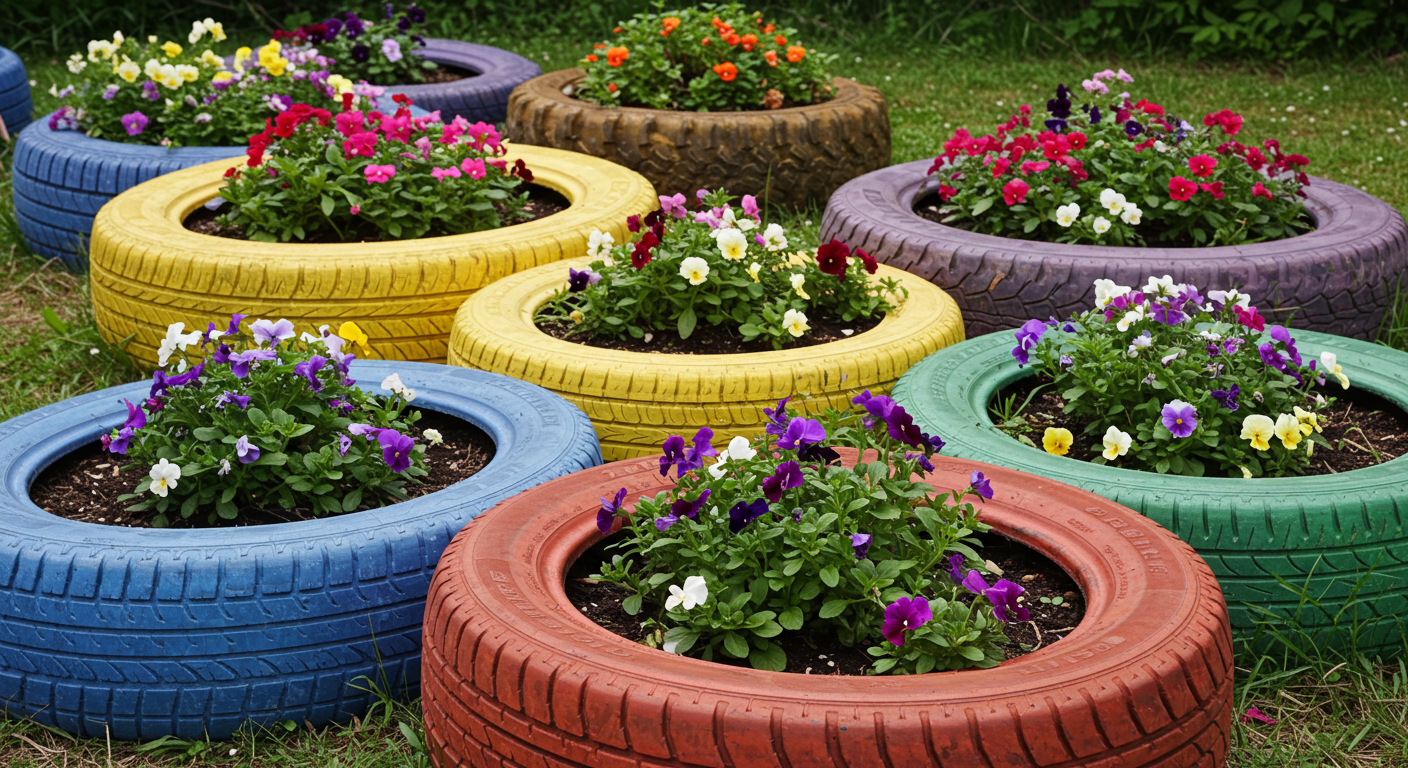Now Reading: DIY Idea: Design a Stylish Recycled Bag Using Old Fabric and Leather Scraps
- 01
DIY Idea: Design a Stylish Recycled Bag Using Old Fabric and Leather Scraps
DIY Idea: Design a Stylish Recycled Bag Using Old Fabric and Leather Scraps

Introduction: Upcycling Your Way to a Sustainable Style
In a world increasingly conscious of environmental impact, upcycling has become more than just a trend; it’s a lifestyle. This blog post explores a fun and rewarding DIY project: creating a stylish recycled bag using old fabric and leather scraps. Not only will you be giving these materials a new lease on life, but you’ll also be crafting a unique accessory that reflects your personal style. Get ready to transform discarded materials into a statement piece!
This project is perfect for both beginners and experienced crafters. It allows for creative expression while promoting sustainable practices. We’ll guide you through the process, from gathering materials to adding the finishing touches, ensuring you create a bag that’s both beautiful and functional.
Gathering Your Materials: The Foundation of Your Recycled Bag
The first step in this DIY journey is gathering the necessary materials. This is where the ‘recycled’ aspect truly shines! Raid your closet, attic, and local thrift stores for the following:
- Fabric Scraps: Old jeans, t-shirts, curtains, and upholstery samples are all excellent choices. Consider mixing different textures and patterns for a more visually appealing bag.
- Leather Scraps: Belts, jackets, purses, and even old shoes can provide valuable leather scraps. Leather adds durability and a touch of sophistication.
- Lining Fabric: Choose a sturdy fabric like cotton or canvas for the bag’s lining. This will provide structure and protect your belongings.
- Handles/Straps: Leather straps, rope, fabric strips, or even repurposed belts can be used for the bag’s handles. Consider the length and comfort of your chosen handle material.
- Sewing Essentials: A sewing machine (optional, hand-sewing works too!), thread, needles, scissors, pins, measuring tape, and a seam ripper.
- Optional Embellishments: Buttons, beads, zippers, patches, and embroidery floss can be used to add personalized details to your bag.
Before you start, make sure all fabric and leather scraps are clean and ironed. This will make them easier to work with and ensure a professional-looking finish.
Designing Your Bag: From Inspiration to Blueprint
Now comes the fun part: designing your bag! Consider the following factors when creating your blueprint:
- Bag Style: Tote bag, crossbody bag, shoulder bag, clutch – the possibilities are endless! Research different bag styles to find one that suits your needs and preferences.
- Size and Shape: Determine the dimensions of your bag based on its intended use. Will it be a small everyday bag or a large shopping tote?
- Compartments and Pockets: Consider adding interior pockets for organization. A zippered pocket is great for valuables.
- Closure: Decide on a closure method, such as a zipper, button, snap, or drawstring.
- Embellishments: Plan where you want to add embellishments, such as patches, buttons, or embroidery.
Sketch out your design on paper, noting the measurements and placement of different elements. This will serve as your guide throughout the construction process. Don’t be afraid to experiment and let your creativity flow!
Tip: If you’re new to sewing, start with a simple design like a basic tote bag. As you gain experience, you can tackle more complex projects.
No products found.
Construction: Bringing Your Design to Life
With your materials gathered and your design finalized, it’s time to start constructing your recycled bag. Here’s a general guide to the process:
- Cutting the Fabric and Leather: Using your pattern, cut out the fabric and leather pieces for the bag’s exterior, lining, and any pockets or embellishments. Remember to add seam allowances (usually ½ inch) to all edges.
- Assembling the Exterior: Sew together the fabric and leather pieces for the bag’s exterior. You can create patchwork designs, geometric patterns, or any other design that inspires you.
- Adding Pockets: Sew the pockets to the lining fabric. You can add patch pockets, zippered pockets, or any other type of pocket you prefer.
- Sewing the Lining: Sew together the lining pieces to create the bag’s lining.
- Attaching the Lining to the Exterior: Place the lining inside the bag’s exterior, wrong sides together. Pin the lining to the exterior along the top edge.
- Adding Handles/Straps: Attach the handles or straps to the bag’s exterior. Reinforce the attachment points with extra stitching for added durability.
- Closing the Bag: Sew the top edge of the bag, encasing the raw edges of the exterior and lining. Add your chosen closure (zipper, button, snap, or drawstring).
Important: When sewing leather, use a leather needle and a longer stitch length. This will prevent the needle from damaging the leather.
Pro Tip: For a more professional finish, consider topstitching along the seams and edges of the bag.
Finishing Touches and Personalization: Making It Your Own
Congratulations! You’ve successfully constructed your recycled bag. Now it’s time to add the finishing touches and personalize it to reflect your unique style.
- Embellishments: Add buttons, beads, patches, embroidery, or other embellishments to the bag’s exterior.
- Reinforcements: Reinforce any weak points, such as the corners or the handle attachments, with extra stitching.
- Cleaning: Remove any loose threads or marks from the bag.
- Care Instructions: Consider adding a small tag with care instructions to the inside of the bag.
Your recycled bag is now complete! Enjoy your one-of-a-kind creation and wear it with pride, knowing that you’ve contributed to a more sustainable future.
This DIY project is a fantastic way to express your creativity while reducing waste. Experiment with different fabrics, colors, and embellishments to create a bag that’s truly your own. Share your creations with us on social media using the hashtag #RecycledBagDIY!
No products found.















